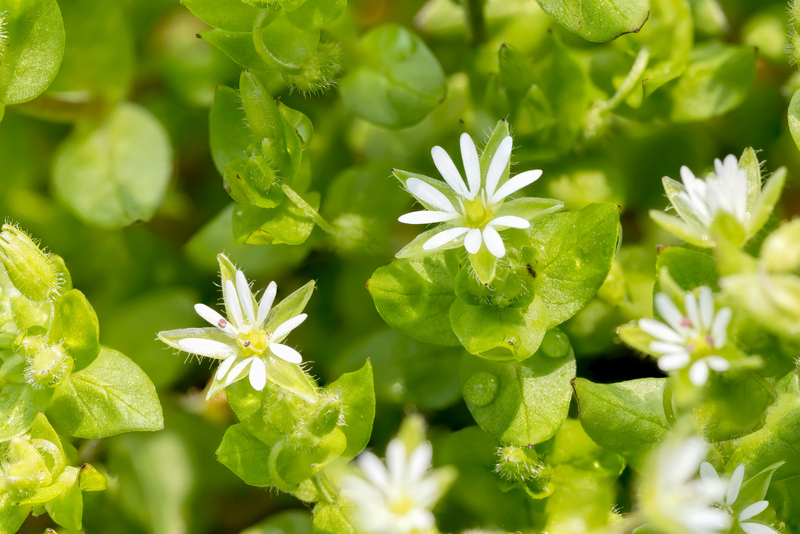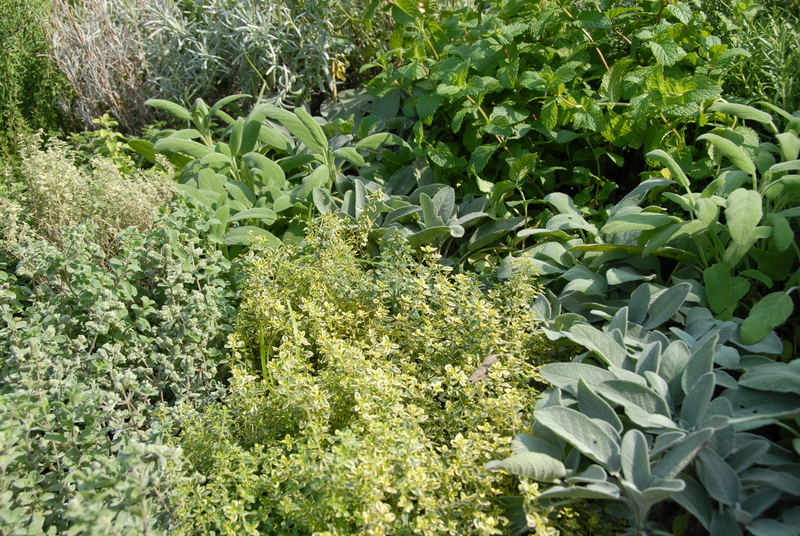Eco-Friendly Ease: 5 Low Maintenance Garden Designs
Posted on 19/06/2025
Eco-Friendly Ease: 5 Low Maintenance Garden Designs
Do you dream of a lush, beautiful outdoor space that nurtures the environment, saves you water, and doesn't eat up hours of your free time? It's possible! Low maintenance eco-friendly gardens are more popular than ever, offering stunning beauty and easy upkeep while supporting local ecosystems. In this article, we'll reveal five inspiring garden designs that are sustainable, simple to maintain, and perfect for any garden lover who values both style and an eco-conscious way of life.
Why Choose a Low Maintenance Eco-Friendly Garden?
With increasing droughts, climate change, and busy modern lifestyles, more homeowners are turning to sustainable landscaping. These gardens deliver tangible benefits:
- Water Conservation: Native plants and smart design significantly reduce water usage.
- Lower Chemical Use: Minimize fertilizers and pesticides by working with nature, not against it.
- Save Time and Effort: Less mowing, weeding, and watering means more time to enjoy your space.
- Support Wildlife: Your garden provides vital habitat for pollinators, birds, and other wildlife.
- Reduce Carbon Footprint: Strategic planting, reduced chemical use, and lower maintenance needs help cut pollution and emissions.
Let's dive into five eco-friendly, low-maintenance garden designs that are perfect for every style, space, and skill level!

1. Native Plant Gardens: Let Nature Lead the Way
Native plant gardens are the gold standard in sustainable, eco-friendly landscaping. These hardy plants thrive in your local climate and soil, requiring far less water, fertilizer, and pest control than non-native species.
Main Features of a Native Plant Garden
- Drought resilient: Less supplemental watering needed, even in dry spells.
- Low fertilizer & chemical input: Native species are adapted to local soil and pests.
- Wildlife friendly: Vital resources for bees, birds, butterflies, and beneficial insects.
How to Create a Native Plant Garden
- Research local plants: Consult local gardening groups, native plant societies, or online resources for suitable choices for your area.
- Plan diverse layers: Mix groundcovers, perennials, shrubs, and small trees to mimic natural ecosystems.
- Plant and mulch: Prepare soil, plant new additions, and mulch to suppress weeds and hold moisture.
- Water as needed in the first year; native plants quickly become self-sufficient.
Popular native options include coneflowers, milkweed, black-eyed Susan, salvia, and bluebells. For even less care, choose native ground covers that out-compete weeds naturally!
2. Xeriscaping: Beauty with Minimal Water
Looking to save both water and effort? Consider xeriscaping -- a style developed for arid and semi-arid landscapes, but increasingly popular everywhere due to climate change concerns. Xeriscapes use drought-tolerant plants, clever landscaping, and smart irrigation to create stunning spaces with almost no watering needed.
Key Elements of Xeriscape Gardens
- Drought-tolerant plants: Choose succulents, cacti, ornamental grasses, lavender, and native wildflowers.
- Efficient irrigation: Drip systems and rainwater harvesting minimize waste.
- Hardscape features: Use rocks, gravel, pavers, or mulch for low-care beauty and weed suppression.
- Minimal lawn area: Grass is replaced with groundcovers and decorative stone.
Benefits of Xeriscaping: Save up to 60% on outdoor water use, spend less time mowing and weeding, and create a stylish, modern environment with year-round appeal.
Tips for Low Maintenance Xeriscaping
- Group plants by water needs for efficient irrigation.
- Mulch everywhere to keep soil cool and moist, and prevent weeds.
- Limit turf; replace grass with stepping stones or clover for even less upkeep.
3. Woodland Gardens: Shade, Serenity, and Wildlife
Woodland gardens are perfect for shady yards, or for those wanting a lush, naturalistic look that's low on involvement and high on bliss. By mimicking the forest floor, these gardens require minimal watering, almost no chemical inputs, and just occasional tidying.
Standout Features of Woodland Garden Design
- Layered plantings: Combine ferns, hostas, native wildflowers, and spring bulbs beneath mature trees.
- Natural mulch: Fall leaves and organic matter feed the soil and reduce weeding.
- Wildlife habitat: Logs, brush piles, and shade plants provide food and shelter for birds, pollinators, and amphibians.
How to Start a Low Care Woodland Garden
- Identify shade-loving plants such as trillium, bleeding heart, Solomon's seal, and ferns.
- Naturalize by planting in drifts and letting lower layers fill in naturally.
- Let leaves stay each fall to suppress weeds and nourish the soil -- nature's own mulch!
- Add logs or "wild" features to increase habitat for beneficial creatures.
Woodland gardens offer year-round interest and require little more than seasonal cleanup, making them a true set-and-forget outdoor retreat.
4. Gravel and Rock Gardens: Modern Minimalism, Enduring Style
Gravel and rock gardens merge contemporary style with near-zero maintenance. Using rocks, gravel, and carefully chosen plants, you create visual drama, structure, and lasting interest that never needs mowing and seldom requires weeding.
Benefits of Eco-Friendly Gravel Gardens
- Low water and fertilizer needs
- Weed suppression with a thick gravel mulch
- Attracts pollinators with blooms among rocks
- Excellent drainage for plant health and stormwater
Creating Your Low Maintenance Gravel Garden
- Choose location: Sunny spots are ideal, but part-shade also works.
- Prepare ground: Remove weeds, lay a weed barrier, and cover with 2-4" of gravel or river rock.
- Add plants: Select drought-hardy specimens like sedums, thyme, ornamental grasses, or Mediterranean herbs.
- Embrace structure: Group rocks or boulders for visual interest and habitat creation.
With seasonal flowers and fascinating textures, rock and gravel gardens are perfect for those who want low upkeep, environmental responsibility, and high modern style.
5. Edible Permaculture Gardens: Sustainable Nourishment
Want a garden that's both beautiful and productive, with very low ongoing work? Edible permaculture gardens are designed around perennial fruits, herbs, and edible plants in self-sustaining guilds that help each other thrive. This method prioritizes biodiversity, mulch, and natural pest control for a virtually maintenance-free, eco-friendly edible landscape.
Main Features of Permaculture Food Gardens
- Focus on perennials: Berries, dwarf fruit trees, asparagus, artichokes, and culinary herbs.
- Mulched paths and beds: Thick mulch keeps weeds and watering needs low.
- Companion planting: Mix pest-repelling flowers and herbs for balanced garden health.
- Polyculture "guilds": Combine plants that work together, providing shade, soil health, and natural protection.
Getting Started with a Permaculture Garden
- Pick a sunny spot: Most edible plants need 6+ hours of sun.
- Start with perennials like fruit bushes, rhubarb, and herbs.
- Use thick mulch to suppress weeds and retain moisture.
- Add companion plants such as marigolds, chives, comfrey, and nasturtiums for pest control and beauty.
- Let nature manage pests with slow gardening: avoid pesticides -- natural predators will move in over time.
Permaculture gardens may need a little setup work, but yield years of food and pleasure with minimal intervention, naturally regenerating and improving over time.

Eco-Friendly Garden Design Tips for Success
Whatever style you choose, these tips help maximize both eco-friendliness and low maintenance:
- Choose resilient plants suited to your local climate and soil.
- Mulch liberally to conserve moisture and block weeds.
- Reduce or eliminate lawn where possible; use groundcovers or low-maintenance alternatives.
- Install smart irrigation or soaker hoses to save water.
- Encourage biodiversity by planting a mix of species and layers.
- Reuse and recycle materials (e.g. reclaimed bricks, logs, or gravel) when creating hardscape features.
- Avoid chemical fertilizers and pesticides. Embrace natural gardening methods.
Conclusion: Enjoying the Ease of Eco-Friendly, Dream Gardens
Eco-friendly low-maintenance gardens don't sacrifice beauty or function -- they enhance it! By working with nature and choosing smart design, you'll have more time for relaxation, lower gardening bills, and the peace of mind that comes from nurturing the environment. Whether you're drawn to native plant gardens, xeriscaping, woodland oases, rock landscapes, or edible permaculture, there's a style that fits your space, lifestyle, and eco-goals.
Ready to start? Embrace the ease, sustainability, and natural charm of a low-care garden. With a little planning and the right inspiration, your yard can become a haven for both people and wildlife -- and a shining example of how beautiful eco-friendly ease can be!
Resources & Further Reading:
- Plant Finder: Native Plants (Audubon)
- Xeriscape Resources (American Xeriscape Council)
- Permaculture Principles
- RHS Low Maintenance Plants
Transform your outdoor space with one of these eco-friendly, easy garden designs -- and love your yard without the hassle!

